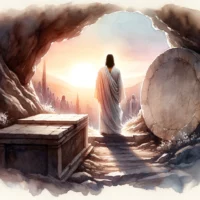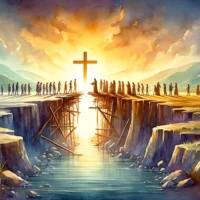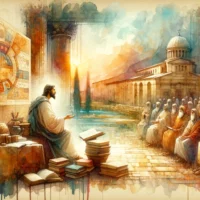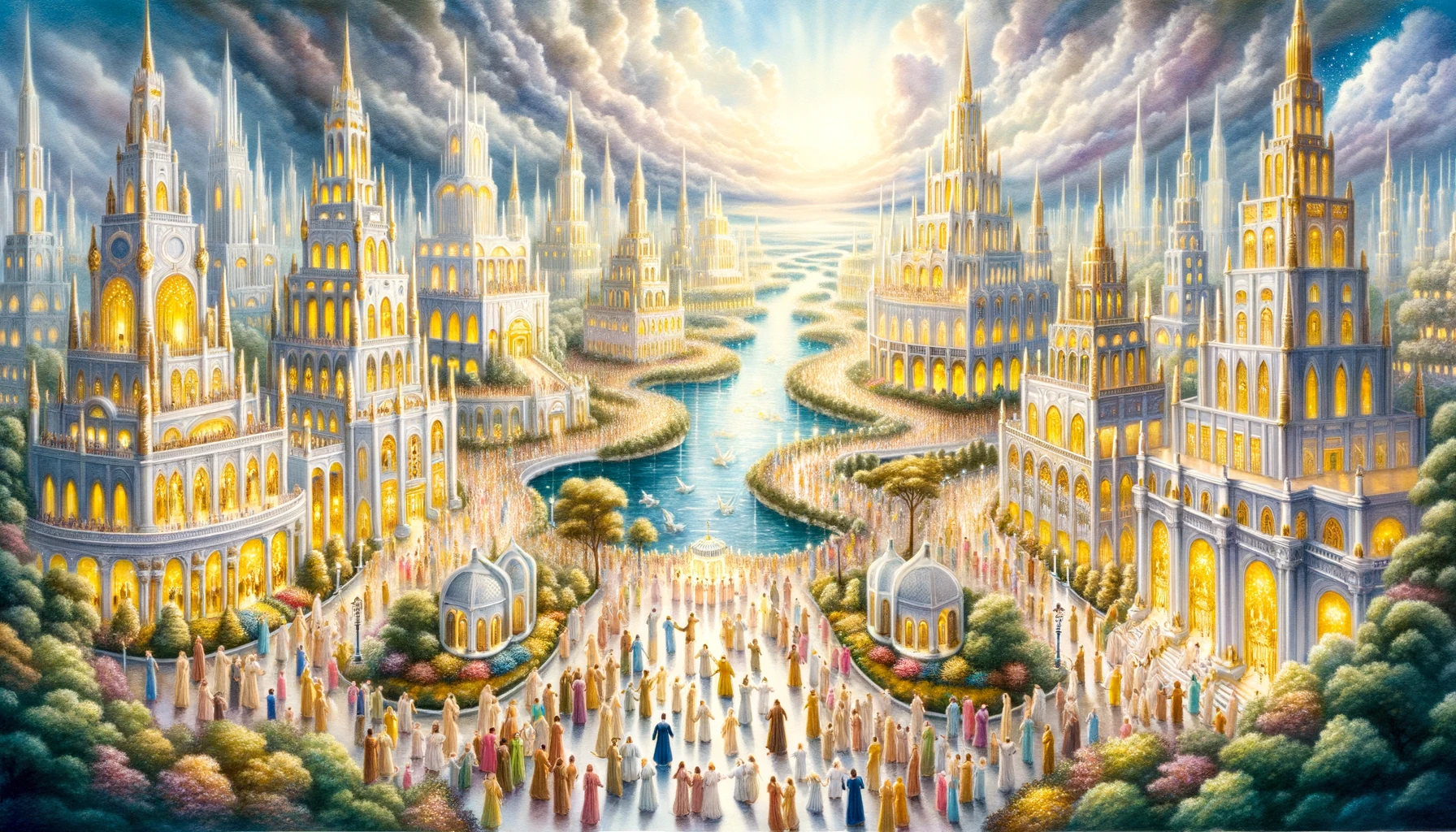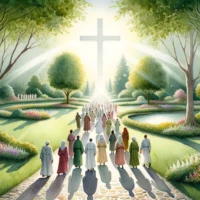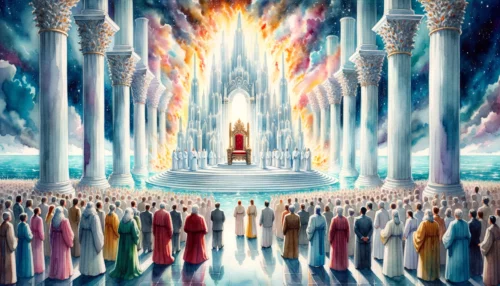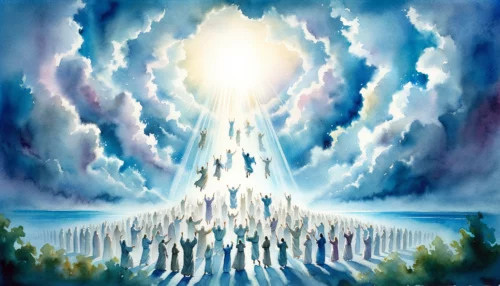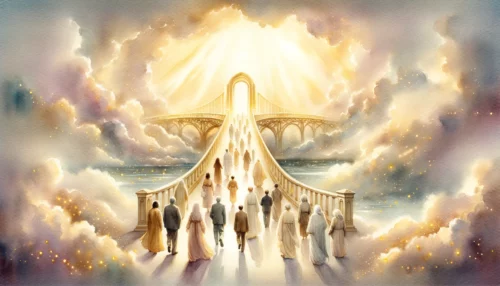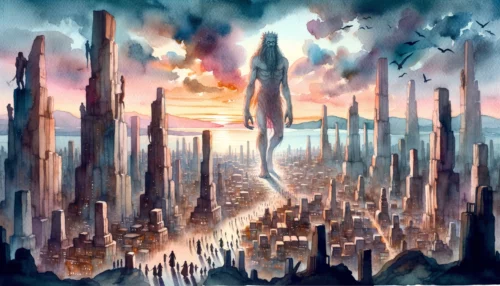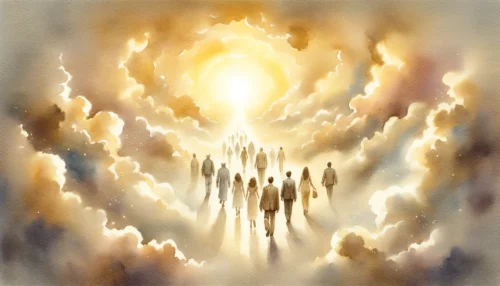The Bible offers a rich tapestry of symbolism and narrative that has captured the imagination of millions for centuries. One of the most fascinating topics is the concept of the New Jerusalem and its relationship to heaven. Are they one and the same, or are there significant differences between them? This article will explore these questions in an informal, yet detailed and comprehensive way, using Biblical references to guide our understanding.
Exploring the New Jerusalem
The New Jerusalem is a prominent theme in the Bible, particularly in the book of Revelation. This celestial city is described as the future dwelling place of the redeemed, where God will dwell among His people and all sorrow and suffering will cease. Let’s dive into the details of the New Jerusalem as described in the Bible.
The most comprehensive description of the New Jerusalem comes from Revelation 21 and 22. John, the author of Revelation, provides a vivid picture of this radiant city. Revelation 21:2 states, “I saw the Holy City, the new Jerusalem, coming down out of heaven from God, prepared as a bride beautifully dressed for her husband.” The imagery of a bride highlights the intimate relationship between God and His people.
The dimensions and materials of the New Jerusalem are also described in Revelation 21. It is said to be a perfect cube, with its length, width, and height all measuring 12,000 stadia (approximately 1,400 miles). The city is made of pure gold, as clear as glass, with walls of jasper and foundations adorned with various precious stones (Revelation 21:18-21). The twelve gates of the city are each made from a single pearl, and the streets are pure gold (Revelation 21:21).
Inside the New Jerusalem, there is no temple, “because the Lord God Almighty and the Lamb are its temple” (Revelation 21:22). There is no need for the sun or moon, as the glory of God and the Lamb provide light, and nations will walk by that light (Revelation 21:23-24). The gates of the city will never be closed, and the kings of the earth will bring their splendor into it (Revelation 21:24-26).
A river of life, clear as crystal, flows from the throne of God and of the Lamb, and the tree of life stands on either side of the river, bearing twelve crops of fruit, yielding its fruit every month (Revelation 22:1-2). The curse of sin will be no more, and God’s servants will serve Him and reign forever (Revelation 22:3-5).
The New Jerusalem is the fulfillment of God’s promise of a new heaven and a new earth, as mentioned in Isaiah 65:17 and 2 Peter 3:13. It represents the culmination of God’s redemptive plan for humanity and the universe, as all things are made new (Revelation 21:5). In the New Jerusalem, God’s presence will be fully realized, as He will dwell with His people, wipe away their tears, and eliminate death, mourning, crying, and pain (Revelation 21:3-4).
Understanding the Biblical Concept of Heaven
Heaven, according to the Bible, is a transcendent realm where God’s presence is fully manifested. It is often depicted as the dwelling place of God, angels, and the souls of the righteous who have passed away. Let’s explore the biblical concept of heaven and its key features.
Heaven is described as God’s throne and the place where He exercises His sovereignty over the entire universe. As it says in Isaiah 66:1, “This is what the Lord says: ‘Heaven is my throne, and the earth is my footstool.'” Heaven is also portrayed as the residence of angels and other heavenly beings, who worship and serve God. In Luke 2:13-14, a multitude of heavenly hosts praise God at the birth of Jesus, saying, “Glory to God in the highest heaven, and on earth peace to those on whom his favor rests.”
Throughout the Bible, heaven is presented as a place of unimaginable beauty, joy, and perfection. In the presence of God, there is complete happiness and fulfillment. The psalmist writes in Psalm 16:11, “You make known to me the path of life; you will fill me with joy in your presence, with eternal pleasures at your right hand.” The Apostle Paul also speaks of heaven as a place beyond human comprehension, stating in 1 Corinthians 2:9, “What no eye has seen, what no ear has heard, and what no human mind has conceived – the things God has prepared for those who love him.”
Jesus often referred to heaven as the “kingdom of heaven” or the “kingdom of God” in his teachings. He used parables to describe the nature of heaven and emphasized the importance of living according to God’s will in order to enter this kingdom. For instance, in Matthew 6:33, Jesus instructs his followers to “seek first his kingdom and his righteousness.” The concept of heaven is also central to the Christian belief in eternal life, as Jesus promises in John 14:2-3, “My Father’s house has many rooms; if that were not so, would I have told you that I am going there to prepare a place for you? And if I go and prepare a place for you, I will come back and take you to be with me that you also may be where I am.”
The biblical concept of heaven is a realm beyond human comprehension, characterized by the full presence of God, unimaginable beauty, joy, and perfection. It is the dwelling place of God, angels, and the souls of the righteous, and represents the ultimate destination for those who follow Jesus and live according to His teachings.
Comparing and Contrasting the New Jerusalem and Heaven
Having explored the biblical concepts of the New Jerusalem and heaven, we can now compare and contrast these two fascinating topics. While both are associated with God’s presence and the dwelling place of the righteous, they are distinct concepts that hold different roles in Christian eschatology.
First, let’s consider the similarities between the New Jerusalem and heaven. Both are described as places of unparalleled beauty, perfection, and joy, where God’s presence is fully manifested. In both heaven and the New Jerusalem, God’s people will experience eternal happiness, as all suffering and pain will cease (Revelation 21:4, Psalm 16:11). Furthermore, both concepts signify the ultimate destination for the redeemed, as they represent the fulfillment of God’s promises to those who love and follow Him (John 14:2-3, Revelation 21:2-3).
However, there are also key differences between the New Jerusalem and heaven. The most evident distinction is that the New Jerusalem is a specific celestial city, with its unique architectural features, dimensions, and materials, as described in Revelation 21. Heaven, on the other hand, is a more general concept, referring to the transcendent realm where God’s presence is fully manifested, encompassing not only the New Jerusalem but also the entire heavenly realm.
Another crucial difference lies in their roles within Christian eschatology. Heaven is often seen as the interim dwelling place for the souls of the righteous who have passed away, awaiting the resurrection of the dead and the final judgment (2 Corinthians 5:8, Philippians 1:23). In contrast, the New Jerusalem represents the ultimate culmination of God’s redemptive plan, descending from heaven after the final judgment to become the eternal home of the redeemed on the new earth (Revelation 21:1-2).
Lastly, the New Jerusalem holds specific significance as the place where God will dwell among His people in an unprecedented way, as described in Revelation 21:3, “And I heard a loud voice from the throne saying, ‘Look! God’s dwelling place is now among the people, and he will dwell with them.'” While heaven is already characterized by God’s presence, the New Jerusalem signifies a new level of intimacy and unity between God and His people, as well as the complete restoration of creation.
In conclusion, the New Jerusalem and heaven share similarities as places of divine presence, beauty, and eternal happiness for the redeemed. However, they are distinct concepts in Christian theology, with the New Jerusalem representing a specific celestial city and the culmination of God’s redemptive plan, while heaven encompasses the entire transcendent realm where God’s presence is fully manifested.
Reflecting on the Journey to Eternity
As we conclude this exploration of the New Jerusalem and heaven from a biblical perspective, we have discovered that these two concepts, while sharing similarities, are indeed distinct in Christian theology. The New Jerusalem is a unique celestial city, representing the culmination of God’s redemptive plan, whereas heaven is the transcendent realm where God’s presence is fully manifested, and encompasses more than just the New Jerusalem.
To further contemplate this topic, consider these personal questions:
- How does understanding the distinctions between the New Jerusalem and heaven impact your perspective on the afterlife and eternity?
- In what ways can you apply the promise of the New Jerusalem and heaven to your daily life and spiritual growth?
- How can the knowledge of the New Jerusalem and heaven inspire you to share the message of hope and redemption with others?
As we journey through life, let us keep our eyes focused on the eternal hope and promises of God, knowing that He has prepared a place for us beyond our wildest dreams. May this knowledge inspire us to live with purpose, love, and faith, as we eagerly anticipate the day when we will dwell in the presence of our Creator, experiencing the fullness of joy and peace that awaits us in the New Jerusalem and heaven.
